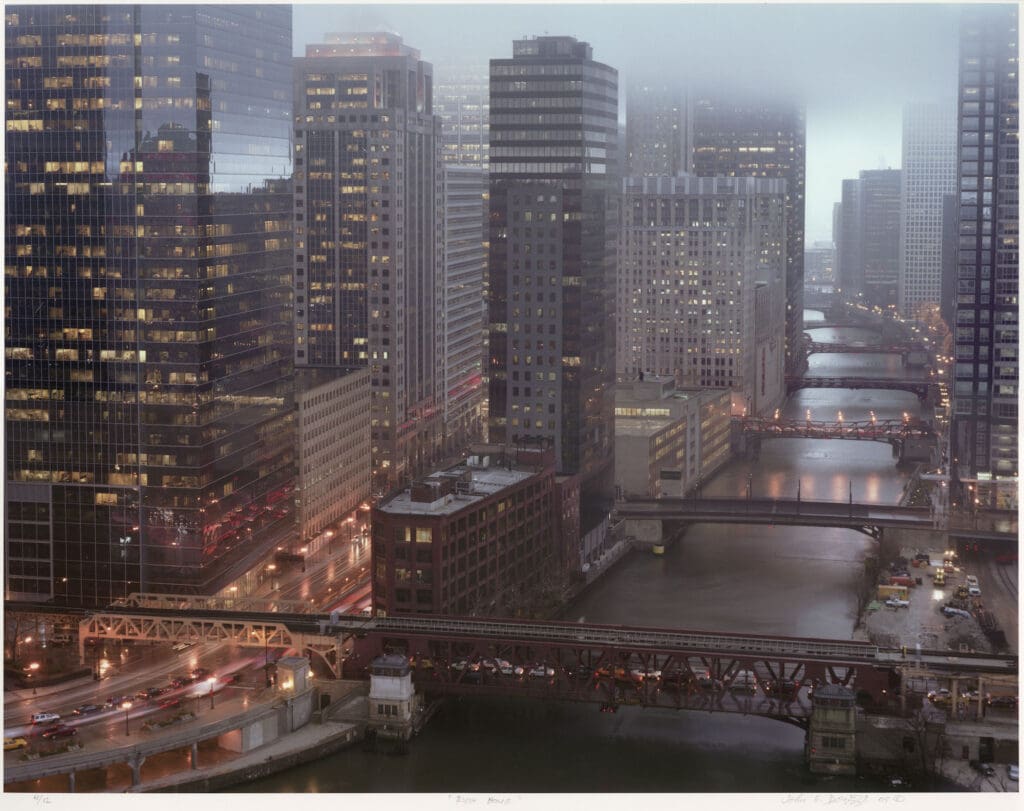Opening Friday, February 16 at 5:30pm
Exhibition Dates: February 17 to April 27, 2024
Jane Lutnick Fine Arts Center, Atrium Gallery
Hours:
Monday–Friday 10 am to 5 pm; weekends 12 noon–5 pm
John E. Dowell Jr. (born 1941) is a Philadelphia native who took art instruction through the School Art League, an art program of the Philadelphia School District. As a teenager, he took Saturday morning and Friday night art classes at the Fleisher Art Memorial. Gaining inspiration from both of these programs, he began to draw and paint with the ambition of being a professional artist. At the Tyler School of Art, Temple University, he studied printmaking and ceramics, graduating in 1963. After graduation, Dowell completed a two-month apprenticeship with Garo Antreasian at the John Herron School of Art in Indianapolis, Indiana in preparation for his fellowship at Tamarind Lithography Workshop in Los Angeles, California. He became the first Black artist to complete master printer training at the highly regarded Workshop. Dowell printed a number of his own prints, which are now in the Tamarind Lithography Workshop Collection, Amon Carter Museum of American Art, Fort Worth, Texas. While at Tamarind he assisted Joseph Albers in printing a suite of Homage to a Square lithographs as well as assisting a host of other art luminaries in residence at the Workshop. Dowell earned a Master of Fine Arts in printmaking and drawing at the University of Washington, Seattle, Washington in 1966. He has since then been a fixture in the Philadelphia art world, nationally and internationally for six decades.
Vantage Point: Color Photographs of American Cities is an exhibition of twenty-four photographs and related works. Dowell’s photographs made from high vantage points captures the grandeur of the modern American metropolis from dawn to dusk. These photographs are an organic outgrowth of Dowell’s relentless experimentation and curiosity. In the 1980s, photo sensitive mylar became available. Dowell began to incorporate photographs into his printmaking process and eventually decided to make stand-alone color photographs in 2000 of the nocturnal city. Dowell saw the city as a canvas to incorporate, color, scale, and the energy generated by the movement of goods and people as the sun sets and the electric lights of the city creates its own a visuality.
Early in the 20th century, Alfred Stieglitz (1864-1946), a photographer and apostolate for defining “the American” in “American Art” identified electric street illumination, as well as the man made light, used to illuminate skyscrapers in American cities and in particular New York City as uniquely American. Stieglitz simultaneously sought to raise the status of photography from craft to fine art by defining this subject as an appropriate means to elevate the status of photography from craft to fine art.
Dowell has taken on this subject matter in the 21st century and made it new. And like Stieglitz and later photographers, he works with a large format view camera. Unlike Stieglitz and the Photo-Secessionists working at the beginning of the 20th century, including Edward Steichen and Alvin Langdon Coburn, Dowell works with color negative film. And unlike modernists, Lewis Hine, Berenice Abbott, and Thurman Rotan, who photographed the New York skyline from high places, which had become common in the 1930s, Dowell prints his color photographs with digital equipment. His photographs of American cities are correspondingly printed up to three feet in size or larger to reveal minute details. The patterns that he locates and the forms associated with them are influenced by his long association with music.
Dowell can best be described as a polymath having developed substantial bodies of work in sculpture, performance, multimedia and installation. His photographs are an expression of the artist’s relentless energy and experimentation with visual form across mediums. Dowell’s photographs and fine art prints and paintings have been featured in more than fifty solo exhibitions; and they are represented in the permanent collections of Seventy museum and public collections including the Philadelphia Museum of Art, Museum of Modern Art and the Metropolitan Museum of Art in New York City, the Museum of Fine Arts, Boston, the San Francisco Museum of Modern Art, and the Bibliothèque Nationale in Paris, France.















